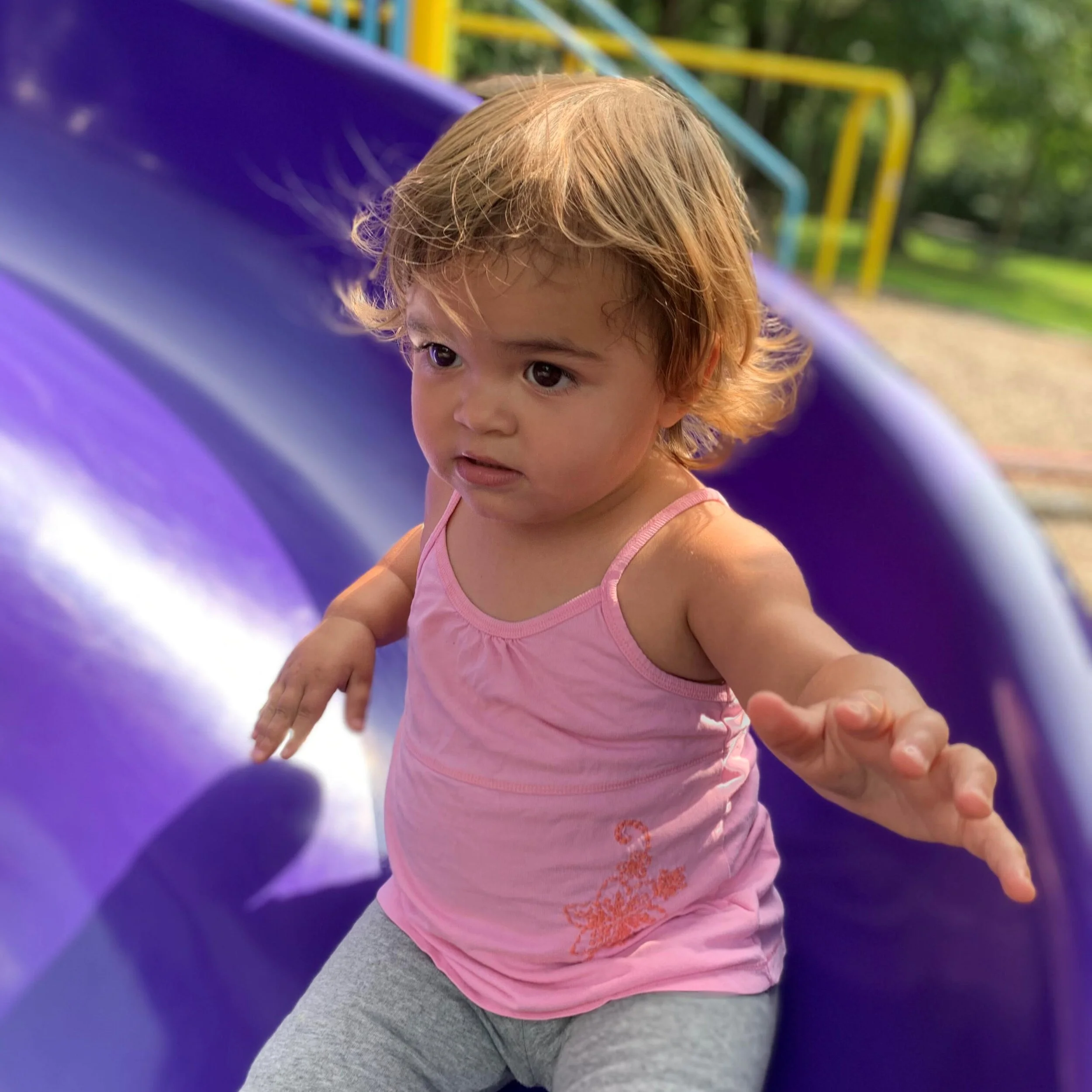Summer Safety: Slides, Swings, and Bonfires
Summer is here! We can now fill our days with fun, sun, and playtime. These joy-filled activities bring us together for hours of exploration, growth, and happiness, but they also bring some risk.
We’re sharing tips on how to keep your kids safe this summer when they’re on swings, going down slides, or enjoying a bonfire.
Slide Safety
Slides give us sensory input, boost our confidence, and challenge our balance and vestibular systems. Even knowing those benefits, we understand the fear a parent has when putting their little one down a slide for the first time!
The Right Sliding Age:
On average, it is safe for typically developing two-year-olds to go down a slide. However, they may need help getting there and sticking the landing. Two-year-olds can typically climb stairs to get to a slide, but three- and four-year-olds can climb a ladder.
Slide One at a Time:
This rule is incredibly important. Do NOT go down a slide with your child and do NOT put your child on your lap to go down together. Either send them solo or not at all!
We weigh more than our kids, so that creates too much force rushing them down the slide at our speeds. When we go down a slide behind or with a child, we risk getting their legs and feet caught with ours. When your child’s foot, leg, or sneaker sole gets caught or stuck on the slide, their body will stop, but our adult weight keeps pushing the child’s body forward. We risk severely fracturing our kids’ legs. Then, at the bottom, we risk landing on top of them!
Help at the Bottom:
The bottom of every slide is different. Be sure to watch your little ones and help them at the bottom as needed.
Go Feet First:
Feet first is safest for sliding and sticking the landing. Feet first on their bottoms is best only if they have the stability and balance to be successful. Feet first on their bellies is best if they are determined to slide into summer but are not quite balanced to land safely.
Find the Right Slide:
Some playgrounds now have a zig-zagging slower slide, which is intended to slow the pace down for little ones. If your child is typically developing and hitting milestones but under two years old, you may want to try the new slower slide.
Swing Safety
Use the Right Swing:
Infant swing seats are recommended for children under three years old and big-kid sling seats are recommended for three years old and older. Sitting on a sling seat requires a great deal of balance, coordination, and arm strength to hold on, which is why they’re for older children.
Follow Their Feelings:
With all playground safety, but especially with swings, if your little one is too scared to sit on a big-kid sling seat, just wait until they’re ready. If you feel they are avoiding all sensory input at the playground, including spinning toys, slides, swings, and tire swings, we recommend consulting your local pediatrician or pediatric physical therapist.
Nursemaid’s Elbow
Nursemaid’s Elbow is the name for when a child’s bones at their elbow partially dislocate from the socket, or a radial head subluxation. This happens when a child is held, pulled, or swung by their hands before their ligaments and muscles are strong enough to withstand the force of that action.
This subluxation usually occurs in children aged one to four years old. Children will immediately cry out due to the pain and will be hesitant or unable to move their arm. To correct the subluxation, a doctor will reduce, or replace, the bone into the socket. The child will then wear a sling while it heals and will continue to be monitored by the doctor.
Swing Safely:
If you’d like to swing your children around in the backyard this summer, just hold them by their armpits, they’ll still love it.
Bonfire Safety
Summer bonfires and s’mores are so much fun! But before allowing your toddlers or young children to enjoy these festivities, it’s critical to discuss fire safety. Make sure your children understand the dangers and the rules of this exciting event.
Stay Supervised:
Always supervise children at a bonfire. Even children who are familiar with the activity need constant supervision, so remain nearby and keep a close eye on their movements.
Keep Your Distance:
It is recommended that children remain seven to 10 feet from an open fire to limit the risk of burns from sparks, accidents, and smoke inhalation. This could mean that an adult needs to roast their marshmallows for them. If baby-wearing near a bonfire, it is recommended to remain seven to 10 feet away due to the risk of infant smoke inhalation.
Create a Safe Zone:
As children, our parents created a ring-of-chairs, occupied or not, around the fire that provided a physical barrier from any child going too close to the fire. This could be a good method that works for you. We also follow the rule that all walking happens outside the ring-of-chairs.
Manage Any Injuries:
If injuries do occur to a child from a bonfire, immediately contact 911 or take your child to the emergency room. You may remove warm or charred clothing from non-burned areas if necessary, however, do not attempt to remove clothing from the burned area and cover the area with a clean damp cloth or towel.





